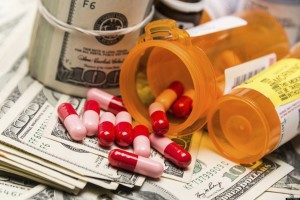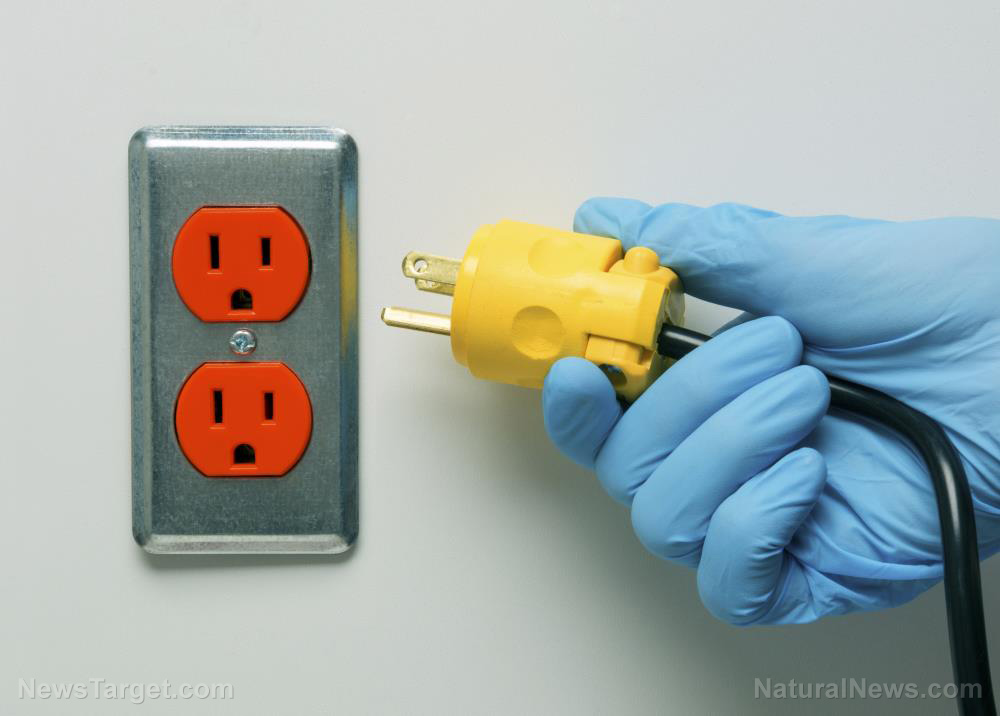
Vitamin D Deficiency a Key Factor Behind Severe COVID-19
The study authors believe that low vitamin D levels are not a “side effect” of COVID-19 but rather are a predictor of infection. As vitamin D plays a role in immune function, the epidemic of vitamin D deficiency is increasing the spread of many “diseases of civilization,” such as heart disease,4 along with reducing protection against infections:5“One strong pillar in the protection against any type of virus infection is the strength of our immune system. Unfortunately, thus far, this unquestioned basic principle of nature has been more or less neglected by the responsible authorities. It is well known that our modern lifestyle is far from optimal with respect to nutrition, physical fitness, and recreation. In particular, many people are not spending enough time outside in the sun, even in summer.
The consequence is widespread vitamin D deficiency, which limits the performance of their immune systems, resulting in the increased spread of some preventable diseases of civilization, reduced protection against infections, and reduced effectiveness of vaccination.”Deficiency of vitamin D3 is also “one of the main reasons for severe courses of SARS-CoV-2 infections,” they explained, pointing out that fatality rates tend to be elevated in populations with very low vitamin D3 levels, including elderly people, black people and people with comorbidities.6 In the early 20th century, it was discovered that a vitamin D level of 20 ng/mL was enough to stop osteomalacia, or rickets, and this level is still used today as a marker of “sufficient” vitamin D levels. However, it’s far too low for optimal health and disease prevention beyond rickets. It’s now known that vitamin D is necessary not only for healthy bones but for health throughout the body. As a powerful epigenetic regulator, vitamin D influences that activity of more than 2,500 genes, and vitamin D receptors are present all over the body, including in the intestine, pancreas, prostate and immune system cells.7 Vitamin D plays a role in numerous diseases, including:8
- Cancer
- Diabetes
- Acute respiratory tract infections
- Chronic inflammatory diseases
- Autoimmune diseases such as multiple sclerosis
Vitamin D Regulates Your Immune Response
Vitamin D receptors are present in nearly all cells of the human immune system, including monocytes/macrophages, T cells, B cells, natural killer cells and dendritic cells. Vitamin D has multiple actions on the immune system, including enhancing the production of antimicrobial peptides by immune cells, reducing damaging pro-inflammatory cytokines and promoting the expression of anti-inflammatory cytokines.9 Cytokines are a group of proteins that your body uses to control inflammation. If you have an infection, your body will release cytokines to help combat inflammation, but sometimes it releases more than it should. If the cytokine release spirals out of control, the resulting “cytokine storm” becomes dangerous and is closely tied to sepsis, which may be an important contributor to the death of COVID-19 patients.10 Many COVID-19 therapeutics are focused on viral elimination instead of modulating the hyper-inflammation often seen in the disease. In fact, uncontrolled immune response has been suggested as a factor in disease severity, making immunomodulation “an attractive potential treatment strategy.”11 Vitamin D is highly relevant here, as it helps to regulate both your innate and adaptive immune systems. However, in order to gain this invaluable benefit, your levels need to be higher than what is officially recommended:12“Receptor binding engages the formation of the ‘vitamin D3 response element’ (VDRE), regulating a large number of target genes involved in the immune response. As a consequence of this knowledge, the scientific community now agrees that calcitriol is much more than a vitamin but rather a highly effective hormone with the same level of importance to human metabolism as other steroid hormones.
The blood level ensuring the reliable effectiveness of vitamin D3 with respect to all its important functions came under discussion again, and it turned out that 40–60 ng/mL is preferable, which is considerably above the level required to prevent rickets.”
Vitamin D Is Protective Against ARDS
Acute respiratory distress syndrome (ARDS) is a lung condition that’s common in severe COVID-19 cases, which causes low blood oxygen and fluid buildup in the lungs. Along with cytokine release syndrome, ARDS is one of the deadliest complications of COVID-19, and vitamin D inhibits the metabolic pathways that may cause ARDS. According to the Nutrients study:13“Angiotensin-converting enzyme 2 (ACE2), a part of the renin-angiotensin system (RAS), serves as the major entry point for SARS-CoV-2 into cells. When SARS-CoV-2 is attached to ACE2 its expression is reduced, thus causing lung injury and pneumonia.
Vitamin D3 is a negative RAS modulator by inhibition of renin expression and stimulation of ACE2 expression. It therefore has a protective role against ARDS caused by SARS-CoV-2. Sufficient vitamin D3 levels prevent the development of ARDS by reducing the levels of angiotensin II and increasing the level of angiotensin-(1,7).”In a previous review,14 researchers also explained that vitamin D has favorable effects during both the early viraemic phase of COVID-19 as well as the later hyperinflammatory phase,15 including ARDS. “Based on many preclinical studies and observational data in humans, ARDS may be aggravated by vitamin D deficiency and tapered down by activation of the vitamin D receptor,”16 they said. “Based on a pilot study, oral calcifediol may be the most promising approach.” Even regular “booster” doses of vitamin D, regardless of baseline vitamin D levels, appear to be effective in reducing the risk of mortality in people admitted to the hospital with COVID-19, particularly for the elderly.17,18 Further, vitamin D influences several additional functions that also support a robust immune response:19
- Decreases the production of Th1 cells, suppressing the progression of inflammation by reducing inflammatory cytokines produced
- Reduces the severity of the cytokine storm by promoting the differentiation of regulatory T cells
- Induces the production of antimicrobial peptide cathelicidin (LL-37), which fights respiratory viruses by disrupting viral envelopes and altering viability of host target cells
- Reduces abnormal coagulation that often occurs in critically ill COVID-19 patients
COVID-19 Mortality Drops With Higher Vitamin D Levels
The featured study involved a meta-analysis of two data sets. One used long-term average vitamin D3 levels for 19 countries, while the other used data from 1,601 hospitalized COVID-19 patients. The hospital data included 784 patients who had their vitamin D levels measured within 24 hours of admission and 817 patients with previously known vitamin D levels. A strong correlation was found between SARS-CoV-2 death rate and vitamin D level, such that mortality decreased significantly once vitamin D levels reached 30 ng/mL.20 Further, they noted, “our analysis shows that the correlation for the combined datasets intersects the axis at approximately 50 ng/mL, which suggests that this vitamin D3 blood level may prevent any excess mortality.”21 Given their findings, the authors recommend “routine strengthening of the immune system of the whole population by vitamin D3 supplementation to consistently guarantee blood levels above 50 ng/mL (125 nmol/L).”22 Researchers in Indonesia, who looked at data from 780 COVID-19 patients, also found those with a vitamin D level between 21 ng/mL (52.5 nmol/L) and 29 ng/mL (72.5 nmol/L) had a 12.55 times higher risk of death than those with a level above 30 ng/mL.23 Having a level below 20 ng/mL was associated with a 19.12 times higher risk of death. A “majority of the COVID-19 cases with insufficient and deficient Vitamin D status died,” they added.24How Much Vitamin D Do You Need?
The best way to know how much vitamin D you need is to have your levels tested. It’s possible to optimize your vitamin D levels via sensible sun exposure, but if this isn’t an option for you then daily vitamin D3 supplementation of up to 10,000 units may be needed to reach a vitamin D level of 40 to 60 ng/mL. However, if you have COVID, and you haven’t been tested, it is best to take the prescription form of vitamin D called calcitriol, which is the activated form of vitamin D, as it works immediately. The dose is 0.5 mcg the first day and then 0.25 mcg for one week. This is a prescription drug. You should also take 10,000 units of regular vitamin D which will start to kick in once you are off the calcitriol. It’s also important to note that vitamin D supplementation must be balanced with other nutrients, namely vitamin K2 (to avoid complications associated with excessive calcification in your arteries), calcium and magnesium. For another perspective, data from GrassrootsHealth’s D*Action studies suggest the optimal level for health and disease prevention is between 60 ng/mL and 80 ng/mL, while the cutoff for sufficiency appears to be around 40 ng/mL. In Europe, the measurements you’re looking for are 150 to 200 nmol/L and 100 nmol/L respectively. Given the impressive findings from the featured study and others, it’s mind-boggling why large-scale studies aren’t being immediately implemented to determine best dosages of vitamin D to protect against COVID-19. As Campbell said, “The fact that medical authorities are not doing this, because it’s such a simple observational study, really is getting into the bounds of negligence.”25 Read more at: TheEpochTimes.com or Mercola.comWhite House wants to cause class warfare between vaccinated and unvaccinated
By News Editors // Share
Bombshell: Vaccinated people are dying from autoimmune attacks against their own organs
By Lance D Johnson // Share
Merck and Pfizer’s “anti-covid” pills are just another profiteering scam to exploit covid hysteria
By Lance D Johnson // Share
Saving lives? New Zealand green-lights euthanasia of covid patients
By Ethan Huff // Share
An invisible assault: How everyday heavy metals sabotage brain health
By willowt // Share
Pentagon warns of China's rapidly expanding nuclear arsenal
By kevinhughes // Share
FCC grounds new Chinese drones in sweeping security move
By avagrace // Share
The methylation switch: Scientists identify diet that can turn back the cellular clock
By jacobthomas // Share
Renaissance or Ruin: A wake-up call for cultural revival and self-sufficiency
By kevinhughes // Share
Weight loss in midlife may trigger brain inflammation, study finds
By avagrace // Share











